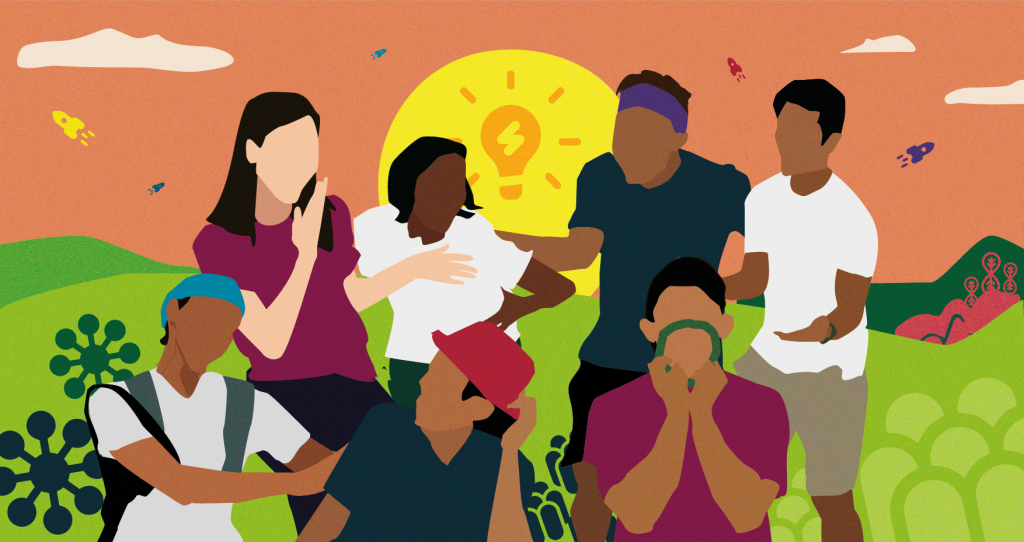3 min read
The pandemic has hastened the need to evolve our businesses. For companies and entrepreneurs, this type of innovation doesn’t just mean bettering our products and services; rather, it entails taking a step back to assess a crucial element that pre-determines how our value will be experienced and distributed in the world: partnerships.
In a conversation with cultural analyst Amaratunga Hitchcock, he emphasised that collaborations across sectors are not just great, but necessary: “For an activist to know they can use the techniques of a scriptwriter, for a marketer to understand their toolkit could be useful to grassroots organisations, opens a whole new world of possibilities. A world of cross pollination and unlikely lateral connections. This is where true innovation happens.”
Every company wants to sustain itself for the long-term, but the truth is, real sustainable change never happens in isolation. If we want to ensure we thrive in these shifting and uncertain times, an investment by every organisation and entrepreneur is required. Radical collaboration, as I had defined in “Why Your Community Plan Matters More than Your Business Plan,” requires “an understanding that one or two social enterprises alone are not enough to change the world. It takes intentionality at a massive scale – involving people all across the board – to create a strong enough wave to change the tide.” The sentiment, if not stronger now, remains. Knowing this, how can companies and enterprises collaborate in re-imagining the future of innovation? Our latest work in the health sector is a hopeful example of how radical collaborations can be the future of business.
A Whole-of-Society Approach to Big Problems
In the Philippines, 8 out of 10 Filipinos have never had a medical check up in their lives. Additionally, for every 10,000 people, there are only 3.9 doctors available to serve them. The issue of health has always seemed a complex mammoth-sized issue to unravel. Questions range from limited health access, to misinformation to poor health literacy. This is a challenge that no single corporation could attempt solving alone.
The Health4All coalition is a great example of a multi-stakeholder decision-making process to realise universal healthcare (UHC) in the country. It was designed to be a people-powered movement that gives anyone, from doctors to startup owners, a platform to bring up challenges in their own communities, which could then be collectively addressed when designing health solutions. Under a year of collaboration, their combined insights helped the coalition realise unique and effective pathways to tackle the health problem, namely through:
- Encouraging more communities to take action: Businesses need to empower the youth and support grassroots movements in disease prevention at the community-level to building health literacy and appreciation
- Building a sustainable health system: Businesses need to support the medical professionals with rewarding and accessible opportunities to make an impact. This will encourage more young medical professionals to go into primary healthcare; the more community doctors we raise, the more resilient our communities
To solve our era’s biggest, complex problems, a whole-of-society approach is necessary to encourage collaborative solution-making and greater accountability among everyone involved.
Getting Out of Our Silos
Antoine Frerot, executive director of Veolia Entertainment, believes that modern businesses do not only create economic value, but also have an important stake in current socio-environmental issues, as “…no economic entity can endure without addressing the urgent appeals of its time”.
If our future is defined by how we collaborate today, then one question we should be asking ourselves is: what is keeping us from breaking free from our silos? Who are our gatekeepers? If anyone can be a collaborator, what should be our criteria for value-adding partnerships – and not merely of potential collaborators, but of our own companies themselves?
Transformative solutions need to be intersectional, as system change requires all of us to act. Perhaps it starts by accepting that individually, we don’t have the answer. It starts by being willing to lend our power to other groups who do have it – young people, artists, activists, researchers, and others – and allow them to lead the way.


















